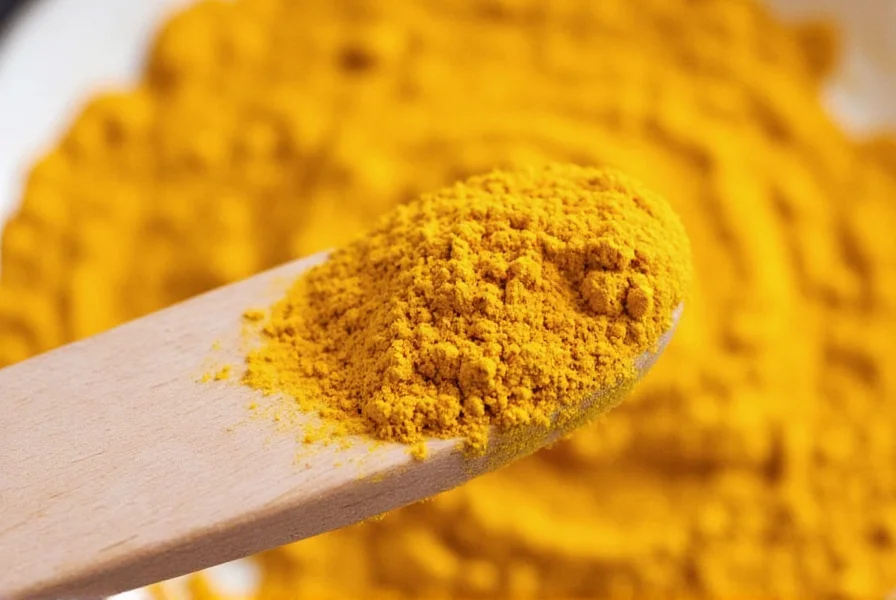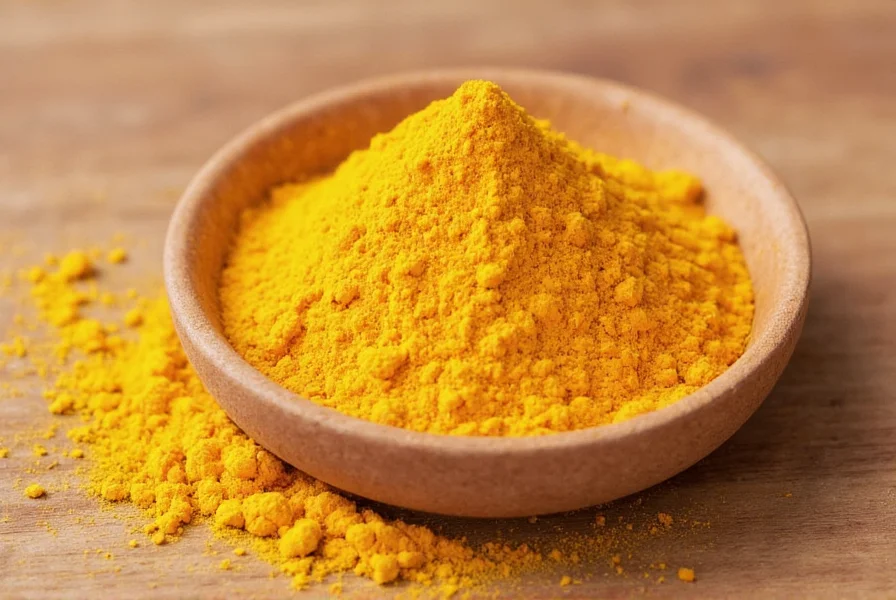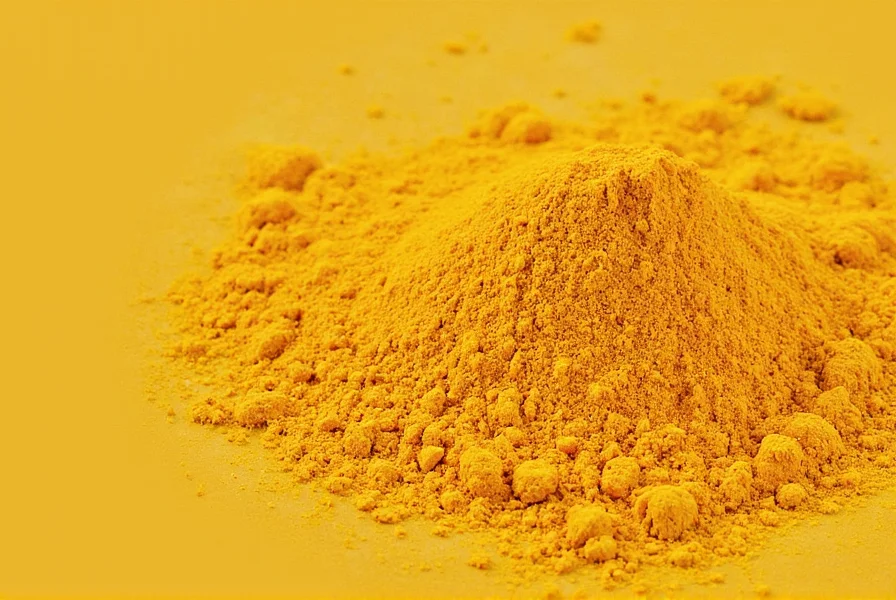Understanding what does turmeric powder taste like requires examining its complex flavor profile. This golden spice, derived from the dried and ground rhizomes of Curcuma longa, offers a sensory experience that goes beyond simple description. When you first taste turmeric powder, you'll notice an immediate earthy richness reminiscent of soil or forest floor, followed by a subtle bitterness that isn't overpowering. This bitterness comes primarily from curcumin, the compound responsible for turmeric's vibrant color and many health properties.
Unlike hot spices such as chili peppers, turmeric provides a gentle warmth rather than intense heat. Many people detect faint citrus notes—sometimes described as lemony or orange-like—alongside subtle ginger-like qualities, though fresh turmeric root has a more pronounced ginger flavor than the dried powder. The texture contributes to the experience too; high-quality turmeric powder feels smooth rather than gritty when tasted.

Breaking Down Turmeric's Flavor Components
Turmeric's taste profile consists of several distinct elements that work together to create its characteristic flavor:
| Flavor Component | Description | Intensity Level |
|---|---|---|
| Earthy | Soil-like, rich, grounding flavor reminiscent of forest floor | High |
| Bitter | Clean bitterness similar to dark chocolate or coffee | Moderate |
| Warmth | Gentle heat without burning sensation | Low-Moderate |
| Citrus | Faint lemon or orange undertones | Low |
| Astringency | Drying sensation on the palate | Low |
How Processing Affects Turmeric's Taste
The flavor of turmeric powder varies based on several factors. fresh turmeric vs dried turmeric taste differences are significant—fresh root has a more pronounced ginger-like quality and juiciness, while dried powder develops deeper earthy notes. The drying and grinding process concentrates certain compounds while diminishing others.
Quality matters when considering why does turmeric powder taste bitter. Higher quality turmeric processed at lower temperatures retains more volatile compounds that contribute to its complex flavor profile. Poorly processed turmeric can develop unpleasantly sharp bitterness or musty flavors. Freshness also plays a role; older turmeric powder loses its nuanced flavors and develops a more one-dimensional bitter taste.
Turmeric Compared to Similar Spices
Understanding turmeric's flavor becomes clearer when comparing it to related spices:
- Ginger: Fresh turmeric shares ginger's slight heat and citrus notes, but dried turmeric powder is earthier and less pungent than ginger powder
- Saffron: Both provide golden color, but saffron has floral, honey-like notes while turmeric is earthier and more bitter
- Paprika: Paprika offers sweetness and mild heat; turmeric provides earthiness without significant sweetness
- Cumin: Cumin has a stronger, smokier profile; turmeric is more subtle with citrus notes

Practical Implications for Cooking
Knowing how to describe turmeric taste helps in culinary applications. The earthy bitterness balances well with:
- Fats (coconut milk, ghee, olive oil) which mellow the bitterness
- Acids (lemon juice, vinegar) that brighten the earthy notes
- Sweet elements (honey, coconut, sweet vegetables) that counterbalance bitterness
- Other spices (black pepper enhances absorption while adding complementary heat)
When cooking with turmeric, remember that heat intensifies its bitterness. Adding it early in the cooking process develops deeper earthy flavors, while adding it later preserves more of its subtle citrus notes. The compound curcumin responsible for turmeric's color and many benefits is fat-soluble, which explains why traditional preparations often include oil.
Common Misconceptions About Turmeric's Flavor
Several myths persist about turmeric's taste profile. Many people wonder is turmeric powder supposed to be bitter—yes, a mild bitterness is natural and indicates proper curcumin content. However, extremely bitter turmeric may be old or poorly processed.
Another misconception is that turmeric should taste hot like chili peppers. In reality, turmeric provides warmth without significant heat. Some commercial products add fillers or other spices that alter the authentic flavor profile, leading to confusion about what pure turmeric powder should taste like.
Maximizing Turmeric's Flavor in Dishes
To best utilize turmeric's distinctive taste:
- Store in an airtight container away from light to preserve flavor compounds
- Use within 6-12 months for optimal flavor (older turmeric becomes more bitter)
- Combine with black pepper to enhance both flavor and curcumin absorption
- Bloom in oil before adding liquids to release flavor compounds
- Balance with complementary flavors like citrus, coconut, or honey
Understanding the taste characteristics of turmeric powder helps you use this versatile spice more effectively in both traditional and innovative recipes. Its unique earthy-bitter profile with subtle citrus notes makes it irreplaceable in many culinary traditions worldwide.
Frequently Asked Questions
Is turmeric powder naturally bitter?
Yes, turmeric powder has a natural mild bitterness that comes from curcumin, its primary active compound. This bitterness is normal and indicates proper curcumin content. High-quality turmeric has a balanced bitterness that's not overwhelming, with earthy and citrus notes that complement the bitter element. Extremely bitter turmeric may be old or of poor quality.
How can I reduce turmeric's bitterness in recipes?
You can balance turmeric's natural bitterness by combining it with fats (like coconut milk or olive oil), acids (lemon juice or vinegar), or sweet elements (honey or coconut sugar). Blooming turmeric in oil before adding other ingredients helps mellow its flavor. Using fresh turmeric root instead of powder provides a less bitter, more ginger-like flavor profile.
Does turmeric taste like ginger?
Fresh turmeric has some flavor similarities to ginger, with citrus notes and mild warmth, but dried turmeric powder is distinctly different. Turmeric is earthier and more bitter with less pronounced heat than ginger. While both come from the same plant family (Zingiberaceae), their flavor profiles have evolved to serve different culinary purposes.
Why does my turmeric taste musty or stale?
Turmeric that tastes musty or stale is likely old or improperly stored. Turmeric powder typically maintains optimal flavor for 6-12 months when stored in an airtight container away from light and moisture. Exposure to air, light, or humidity degrades the volatile compounds that contribute to its complex flavor profile, leaving behind primarily bitter notes.
Can you taste turmeric in golden milk?
Yes, but the earthy flavor of turmeric is significantly mellowed in golden milk. The combination of warm milk (dairy or plant-based), fat (like coconut oil or ghee), sweetener, and complementary spices (cinnamon, cardamom, black pepper) balances turmeric's natural bitterness. High-quality golden milk should have a subtle earthy warmth from turmeric rather than a pronounced bitter taste.











 浙公网安备
33010002000092号
浙公网安备
33010002000092号 浙B2-20120091-4
浙B2-20120091-4